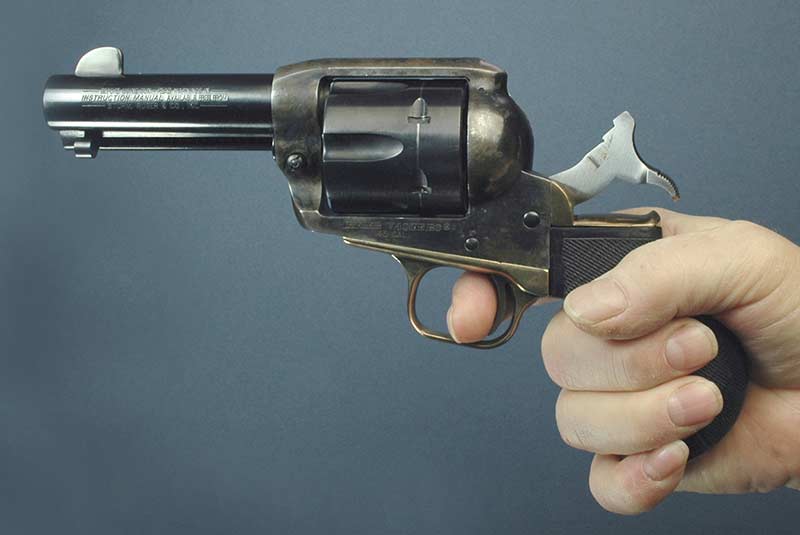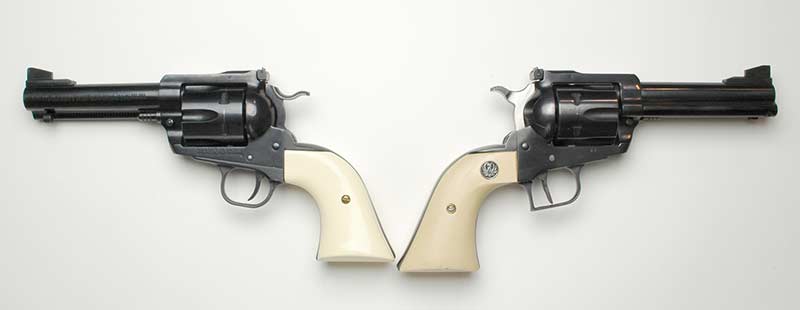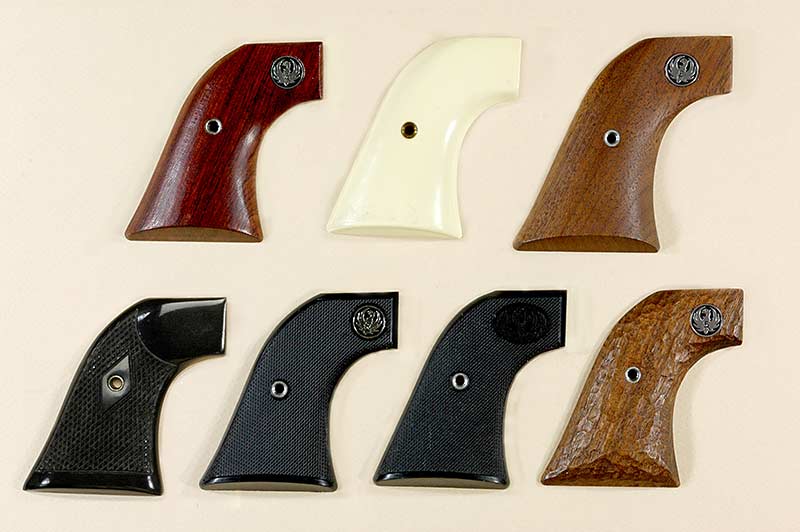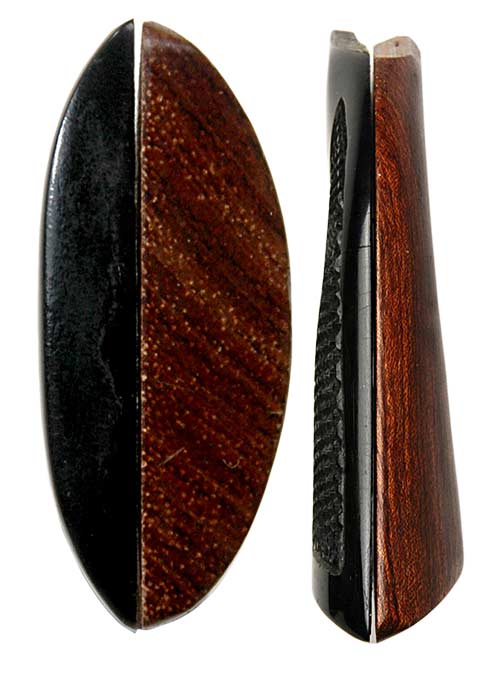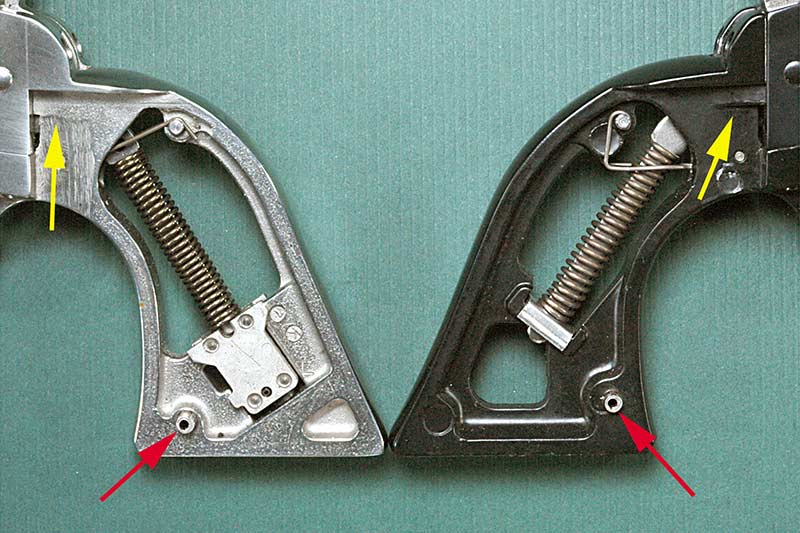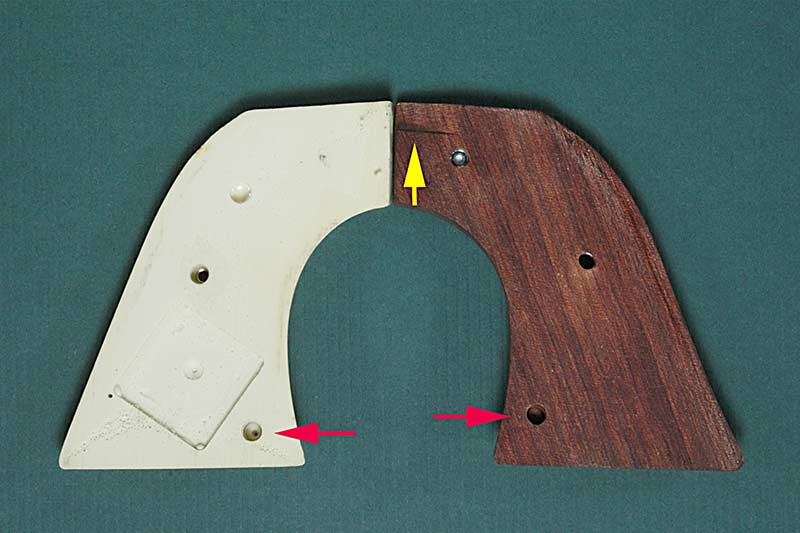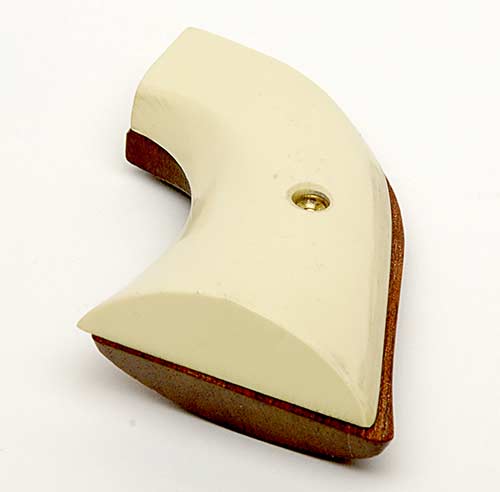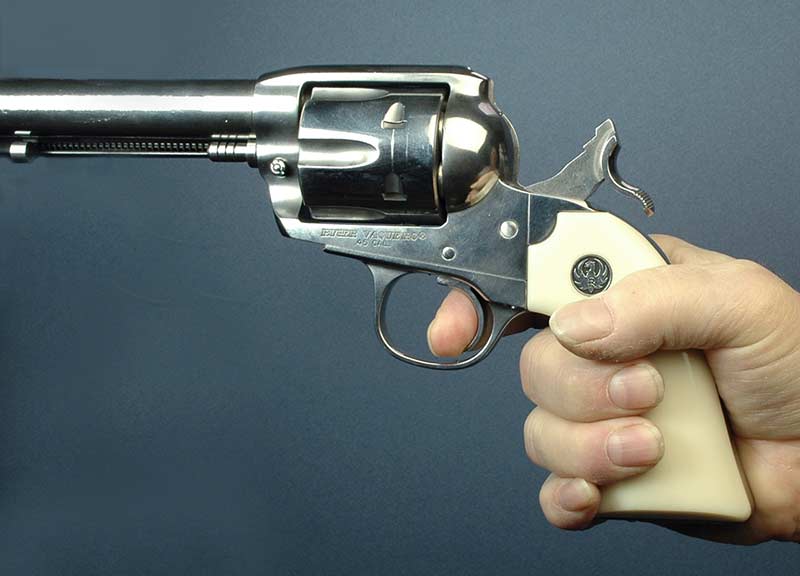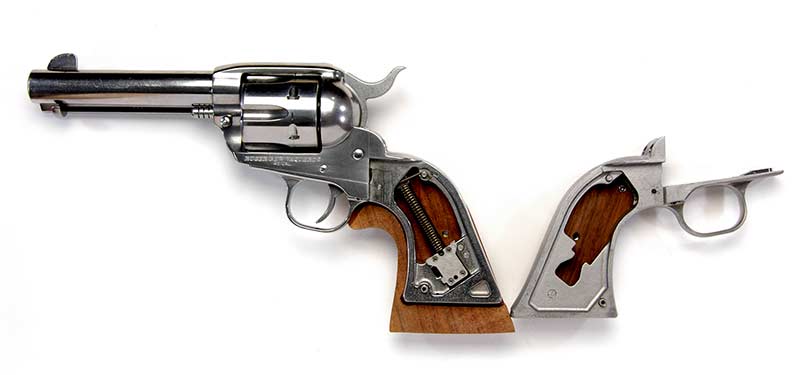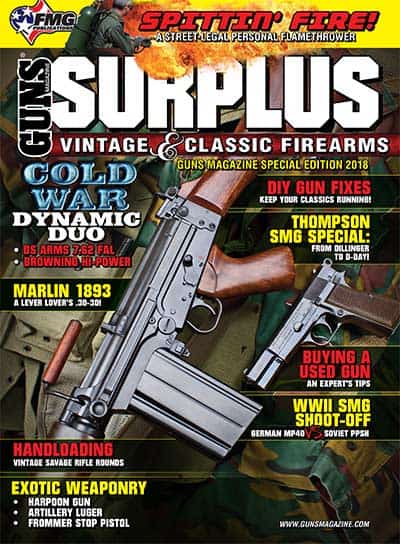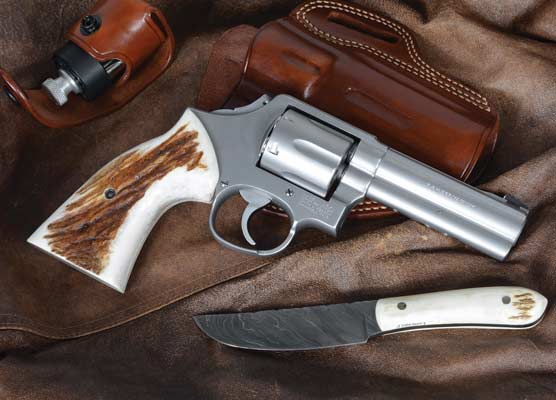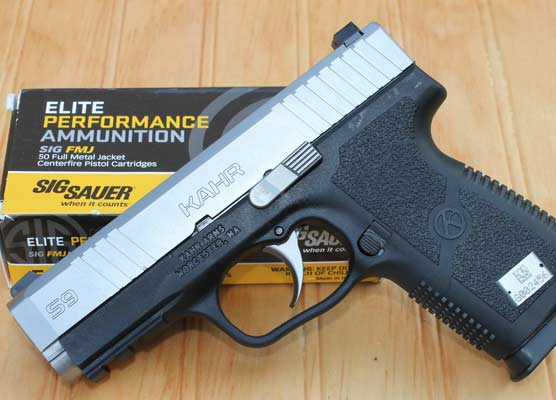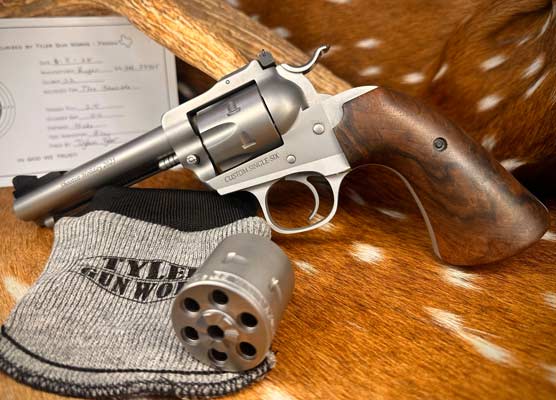Get A Grip!
A Guide to Understanding the “Handling”
Variations of Ruger Single Actions.
Yeah, I have my share of GLOCKs. But my first and last love is single-action revolvers. There, I’ve said it and I’m sticking to my guns (mostly in .45 Colt). Anyone who has spent even a little bit of time shooting an SA revolver knows you normally hold it with two fingers grasping the grip, the little finger beneath the front tip of the grip frame and hold on tight. That’s just the way it is, and most of us get along just fine.
However, in my opinion, single actions are only the second most difficult handgun type to shoot accurately and consistently. The snub-nosed .38 still takes first prize, but for different reasons. The problem with the SA is the comfortable plowhandle shape of the grip frame, which is often praised for its tendency to roll in the hand when fired. Many claim this reduces felt recoil. When it rolls, most shooters need to shift the gun in their hand to re-cock the hammer. This makes it difficult to regain the same exact hold on the handle for the next shot.
Consistency means smaller groups at the range and being able to place subsequent shots more precisely in the field. An excellent solution is to shoot two-handed. Grasp the gun in one hand to shoot it and use your off-hand for extra support. Do not use your shooting hand to re-cock the hammer. Instead, maintain your grasp on the grip and use the thumb of the supporting hand to re-cock. This technique increases both speed and accuracy.
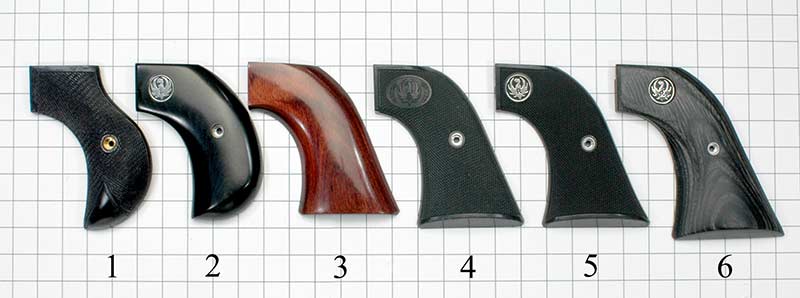
From left: (1) NC Ordnance 1877 “Lightning” style, (2) Ruger Bird’s Head,
(3) 0.25" shorter XRN-3RED short grip as supplied on the Single-Six .32
H&R Magnum, (4) New Vaquero, (5) New Model Blackhawk and Old Model
Vaquero and (6) Super Blackhawk. The short aftermarket Single-Six grips
are from the old Badger Grips company, formerly in Lockport, NY.
A Bit Of History
The basic design for the SA grip came from the cap-and-ball 1851 Colt Navy and was carried over to the 1873 Colt Single Action Army (SAA) or Peacemaker and is still used today. It is so traditional and so comfortable in the hand that Bill Ruger used it when he designed the Single-Six and Blackhawk revolvers in the 1950’s.
There has been much wailing and gnashing of teeth by Ruger lovers and gunwriters ever since Ruger replaced the original Colt 1851/Ruger XR3 grip frame size in 1963 with the XR3-RED (RED = redesigned) grip frame which is 0.0625″ wider and moves the hand 0.125″ further back from the triggerguard. Not as svelte as the XR3, perhaps, but it spreads the recoil over a slightly larger area for more comfort, and reduces middle finger battering by the triggerguard. Quite a good idea, actually.
Not everyone is totally pleased with the two-fingered grasp on the SA, though. A fair number of Colt SAA aficionados (our own John Taffin included) insist the longer grip frame from the Colt 1860 Army allows for a much better hold on the gun. The Army and Peacemaker grip frames are interchangeable and some, like John,
have the longer 1860 Army grip frames installed on their Peacemakers. When the Ruger Super Blackhawk .44 Magnum came out, it featured a 0.25″ longer grip frame, sort of like putting a Colt 1860 grip frame on a Peacemaker.
If you’re a Ruger fan and would appreciate a longer grip frame, you actually have two easy options. One is to put aftermarket “target” grips on your XR3-RED/XRN-3RED grip frame. They’re usually about 0.625″ longer, but usually fatter — which may or may not be a good thing. They also fill in the area behind the triggerguard to keep your fingers out of there, which is usually considered a good thing. The second option is to purchase a Super Blackhawk Hunter grip frame in either carbon or stainless steel from Midway, Gun Parts Corp. or Brownells (there are also other sources) and bolt it to your Single-Six, Blackhawk, Vaquero or New Vaquero. There are lots of YouTube videos and DVD’s that show how to remove and replace the grip frame (I like Larry Crow’s DVD’s).
Ideally, your new grip frame’s contours should be filed/ground/polished to match your gun where they join, but even if you do no more than polish it (and cold blue a carbon steel one), it will go on. Don’t forget to order a grip panel locating dowel and a set of grip panels and screw for it. If you want something snazzier than what Ruger offers, there’s always eBay, and a Google search shows websites for Ruger SA grip makers at least six pages deep.
One cool-looking style Ruger offers (also seen on some Colt SAA replicas) is the bird’s head. However, everything in the above paragraph about the difficulty of achieving a consistent grasp on the Peacemaker-style grip frame goes double for today’s bird’s head-style. One thing that helped was to put a set of BearPaw “Gunfighter” style walnut panels on my own bird’s head Vaquero that came with a 3.75″ barrel. They’re fatter toward the bottom and thinner in the middle than the OEM grip panels, and then get wider again toward the top. Eagle’s grip panels for bird’s head grip frames look a lot like BearPaw’s.
Yet, what Eagle calls “gunfighter grips” for standard frames are much thinner than OEM at the bottom and in the middle, then simply widen at the top. Go figure. The grip panels on the Talo special edition bird’s head New Vaqueros look a lot like the BearPaw and Eagle style, instead of the original old model Vaquero profile. Someone must have been paying attention to what actual users want!
Older Can Be Better
My all-time favorite style of grip frame — the most comfortable for me ever, bar none — is the one Colt used on their first DA revolver, the Model 1877 “Lightning.” It was the original bird’s head design. I once had an EMF clone of the Colt SAA with the Lightning-style grip frame. Its one-piece walnut stock was fatter toward the bottom, tapering smaller toward the middle, then flaring out again at the top. It reminded me of the handle of my Yankee spiral-drive screwdriver, but attached to a revolver. Quite a delight, actually. Many times I’ve regretted selling it as part of a fundraiser to buy one of the special limited-run New Vaquero Montados for Davidson’s Gallery of Guns before they were all gone (the Montado proved so popular it became a regular item).
Don’t confuse today’s bird’s head design with the original 1877 Lightning. They’re worlds apart. The modern style is difficult to shoot well. The Lightning is pure pleasure. Smith & Wesson must have been paying close attention to what Colt did with the 1877 because when they introduced the classic DA K-Frame in 1899, the top of the grip frame looks like it was swiped straight from the Colt 1877 (minus the spur at the top), and the bottom portion from the Colt SAA. The best of both, as it were. The grip design was a hit from the get-go and hasn’t changed in over 100 years, except for a far less drastic round-butt option many consider more attractive than the 1877 style.
My heart jumped for joy when I discovered NC Ordnance. Among their website listings is a Lightning grip frame (they call it a backstrap) specifically made for Rugers in either bronze or chrome plated. I immediately ordered a bronze one to replace the bird’s head grip on my short Vaquero. What a beauty, too, with the color-case hardened receiver and the bronze grip frame. And what a pleasure to shoot since I also replaced the original high-spur hammer with a low-spur one intended for a Super Blackhawk.
Ruger refuses to sell the checkered low-spur Montado hammers because they need them all for current production. However, the grooved Super Blackhawk hammers have the same profile and are readily available as a complete assembly with the hammer plunger, plunger spring and plunger pin already installed, ready to drop in. They fit New Model Blackhawks and both old and New Vaqueros. No such luck for Single-Sixes, though.
I’m so pleased with the Lightning backstrap on my Vaquero I’ve since ordered a chrome plated one to put on my polished stainless Montado. It’s going to require removing the two little tabs that go into slots in the rear of New Model Blackhawks and old Vaqueros because Ruger did away with the tab-and-slot arrangement on the New Vaqueros. It shouldn’t take too much grinding and filing. Interestingly, the big SBH grip frame doesn’t come with the tabs. It will simply attach to a New Vaquero with no modification. Apparently the tabs — or studs — proved to be unnecessary and Ruger simplified the casting.
My next move will be to hack and gouge a couple sets of smooth grip panels from some walnut rescued from my neighbor’s firewood pile to replace the pretty cheese graters that come with the Lightning backstraps.
Off to the garage I go!
The Bisley Angle
We often read shooters generally either love or hate the rather odd-looking Bisley grip shape. Me? I have no opinion one way or the other. The traditional Colt/Ruger XR3 grip frame and the Bisley are just different, that’s all.
The Colt/XR3 shape is a more natural pointer: you just hoist the gun up and point/aim it like you’re pointing your finger. The Bisley was designed for target shooting, and the gun must be deliberately aimed.
Look at the photos of the difference in wrist angle when holding a New Vaquero XR3 grip frame and a Vaquero Bisley. Then try this exercise: extend your arm out in front of you and point your finger at something straight ahead, looking straight along the edge of your finger. Now, carefully bend your elbow and observe the angle of your hand and wrist in relation to the long bones of your arm.
Next, close your eyes, extend your arm straight out again, but this time don’t point at anything — simply close your hand into a fist. Open your eyes and without moving your hand at all extend your index finger. Notice how this time your finger is sticking up in the air. Try it a couple of times. Again, without moving your wrist, bend your elbow and observe the angle of your wrist. It will be at a 90 degree angle to your arm bones.
The difference in angle between pointing and simply keeping your wrist straight is the difference between the Colt/XR3 and the Bisley grip angle. This is why the Bisley was so great on the target range for consistency and less fatigue, and why some Bisley shooters feel it is better for hard-recoiling guns. The recoil comes back into the arm bones in a straight line with no flexing of the wrist.
I think the “love it or hate it” business comes from whether you’re using the Bisley for the intended purpose or not.
XR3 Grip Panel Interchangeability
The original, long discontinued XR3 grip frame is similar but not identical to the new XR3 grip frame used on the New Vaquero. The panel locating dowel location is the same, but the NV grip frame is a good 0.125″ wider toward the front when viewed from the side, and about 0.062″ wider at the rear, and the contour shape is a bit different.
Plus, the old XR3 grip frame has protrusions at the top requiring corresponding notches at the top front corners of the grip panels, while the NV XR3 does not. The photos show this very clearly. Thus, while old XR3 grip panels will go on a NV, they’re really too small front to back with lots of metal showing. NV grip panels will not go onto an original XR3 frame unless you notch the corners, and they will need to be sanded down smaller so they don’t hang over the front and back.
For More Info:
stores.ebay.com/Bearpaw-Ruger-Grip-Store (BearPaw)
www.brownells.com
www.eaglegrips.com
www.midwayusa.com
www.gungrip.com (NC Ordnance)
www.gunpartscorp.com (Numrich’s)
To learn More:
Blacksmith Guide to Ruger Flattops and Super Blackhawks by H.W. Ross Jr., Know Your Ruger Single Actions: The Second Decade 1963–1973 by John C. Dougan, The Ruger Single Action Revolvers, A Shop Manual by Jerry Kuhnhausen, Ruger Vaquero Disassembly, Reassembly Cleaning Maintenance DVD by Larry Crow, Single Action Sixguns by John Taffin

